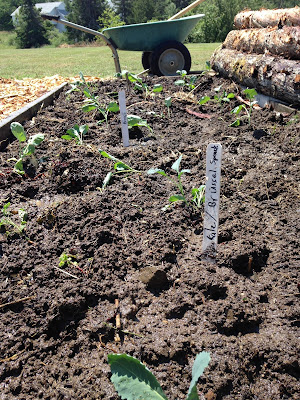Garden Camp Week 7: Taking Stock, Making Stock

The summer is a little more than half over, so this week at garden camp we spent the morning taking stock of all that we've learned so far - gathering up and accounting for all the knowledge and experiences we've shared in the garden. Broccoli going to seed Mrs. L led us on a garden scavenger hunt, calling out different plant names, processes, and properties for us all to identify and find in turn. This week, the sunflowers are in full bloom and attracting a parade of pollinators through the day. Our broccoli plants, which had long ago started flowering, had gone to seed, and we noticed just how many seed pods each plant produces. Our green beans are popping up to replace the dying alliums, and our greenhouse cucumber vines are growing up towards the rafters! We returned to the outdoor classroom to brainstorm just some of what we've learned from garden camp so far, about soil, worms, pollinators, medicinal plants, and plant parts. We filled up one w...




